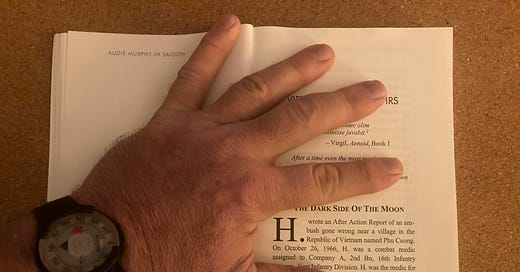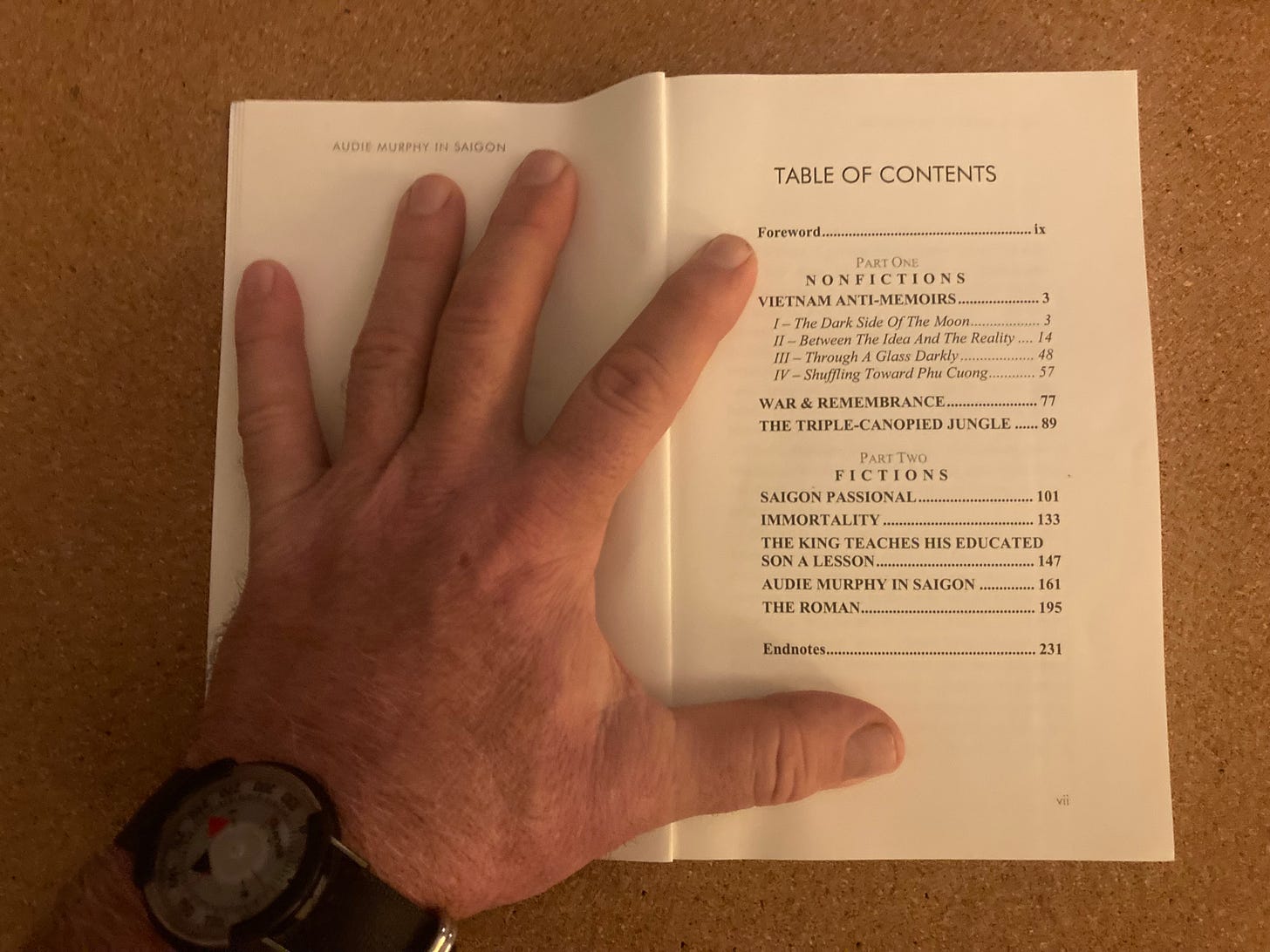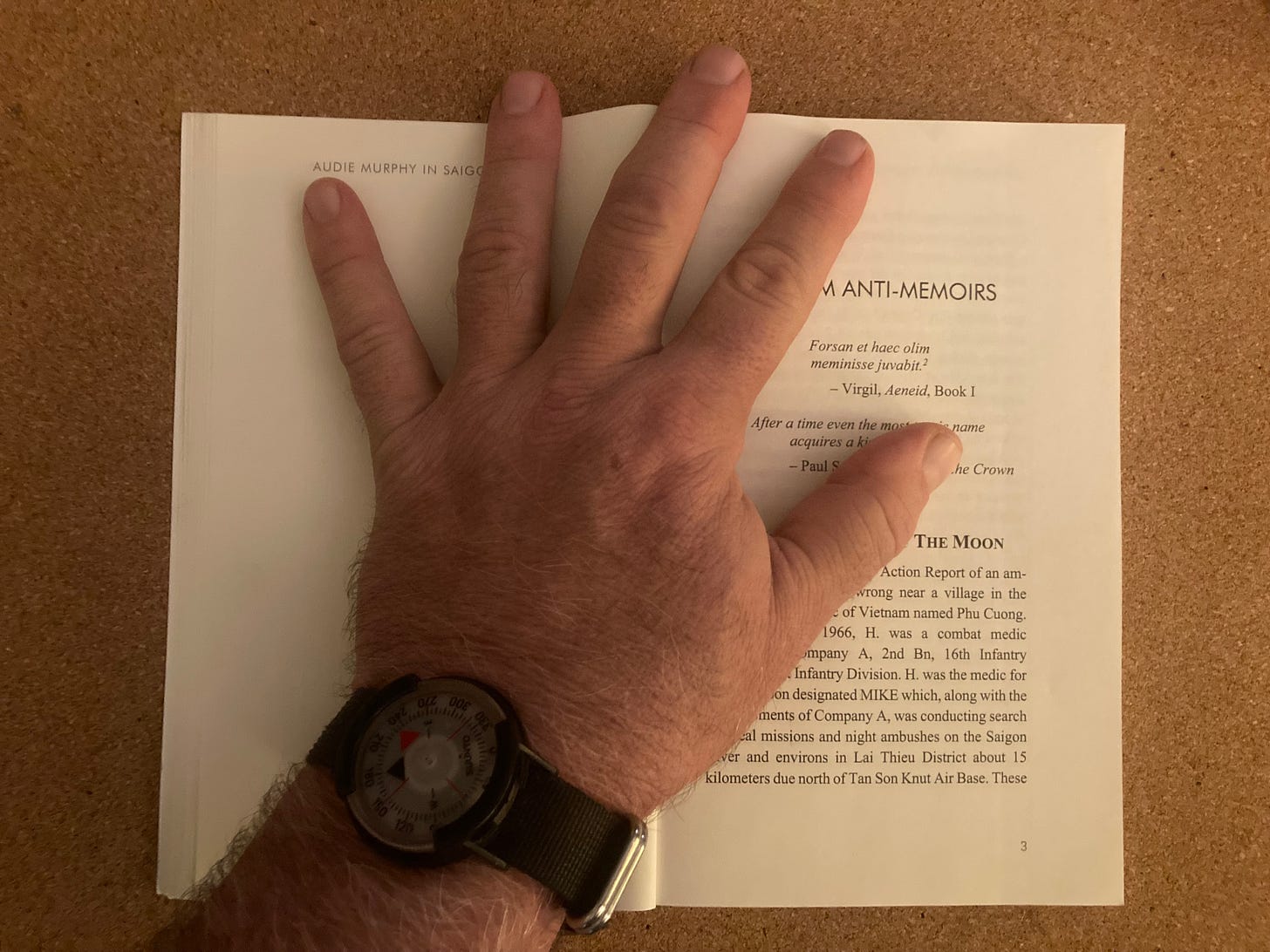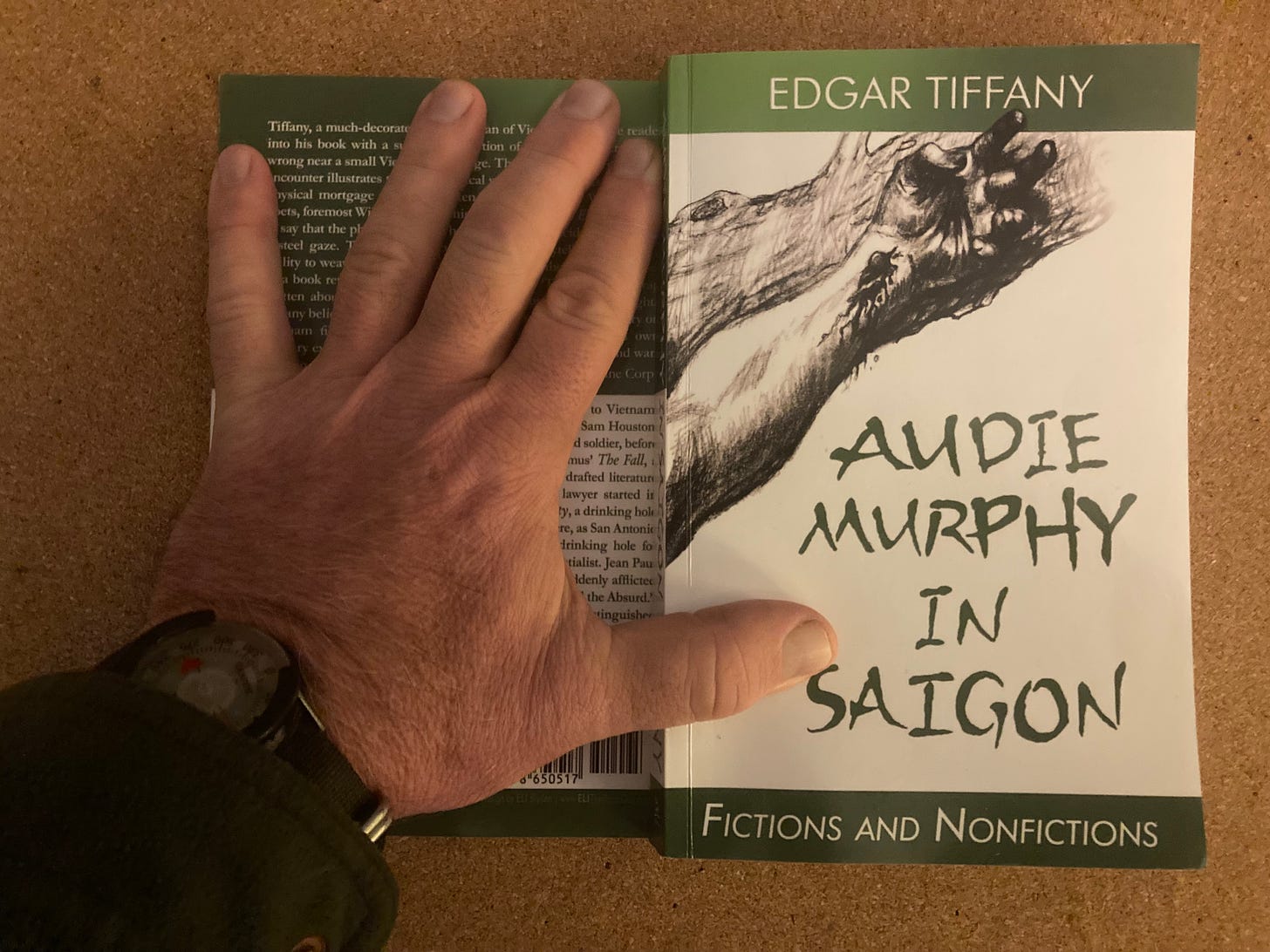H. wrote an After Action Report of an ambush gone wrong near a village in the Republic of Vietnam named Phu Cuong.
H. didn’t get the unit records (After-Action Reports, Daily Journals, Situation Reports) until 20 years after he
wrote a recalled impression of the ambush at Phu Cuong for a writing class in college in 1973.
So, he first wrote this story as a witness in 1966. He wrote it again from memory as a student in 1973.
Around 1993 he reviewed his witness statement and college essay in light of the journal and report of the whole day and situation from headquarters. He wrote it again this third time and published the account as author of his own life in 2020.
That’s an ethnographic procedure. The participant observer takes a field note, returns to the event years later in seminar, then revisits the memory in context of the contemporary report and the literature around it, for publication.
We don’t have many ethnographic accounts from the occupation of the Republic of Viet Nam by the United States of America. Overall it was an excess mortality event on the order of 3 times 10 to the 6 and counting.
The morbidity is incalculable and not enumerated, long since endemic to American and Vietnamese lives. This butcher bill from 1 morning at 1 spot from 1 claymore is something a person can grasp.
Edgar Tiffany put it just after the front of his book, his own first work in the collection, the first anti-memoir in a series of 4. He begins, forsan et haec olim meminisse iuvabit.
Words to live by. Troy has fallen, the fleet of refugees is shipwrecked or sunk, it starts to rain, and Aeneas advises his men that one day even this may be a happy memory.
Try it next time your city falls. Vergil has proved right again and again over my lifetime since I first read that poem just after Saigon fell.
I don’t see it working here for the author. I suggest instead sunt lacrimae rerum et mentem mortalia tangunt.
That’s at Carthage where Aeneas is overcome by a work of public art, a mural, the movies, newspapers, and novels of that day, showing his war. The world is tears and things that die touch the mind.
You just contemplate them. They never become good for a smile.
The front cover illustrates the first story, Saigon Passional, in the half of the book devoted to fictions. A pathologist and tech at the airport in Saigon take apart a forward observer found after the Communists killed him, nailed him to a stump, then saved the nails for next time.
The white part of the back cover is by the artist who drew the illustration, Kenneth Keys, another Army medic who met Edgar where we train them, Fort Sam Houston. The discussion in green is from another sergeant, Robert DuTremble.
James Huneycutt who wrote the foreword is like Kenneth and Robert an intense and wide reader. This book is a nest of books and readers and writers.
I will get to them, god willing. But first off I wanted to show the author reading and writing himself.
This seems to be the name of the publisher. Does a book have Buddha nature?
This is the second Viet Nam letter concerning Audie Murphy in Saigon by Edgar Tiffany. The first appeared January 7, 2024.
Viet Nam letters respects the property of others under paragraph 107 of United States Code Title 17. If we asked for permission it wouldn’t be criticism. We explain our fair use at length in the letter of September 12, 2022.
The colophon of these Viet Nam letters, directly above, shows the janitor speaking with poet David A. Willson on a Veterans Day.













